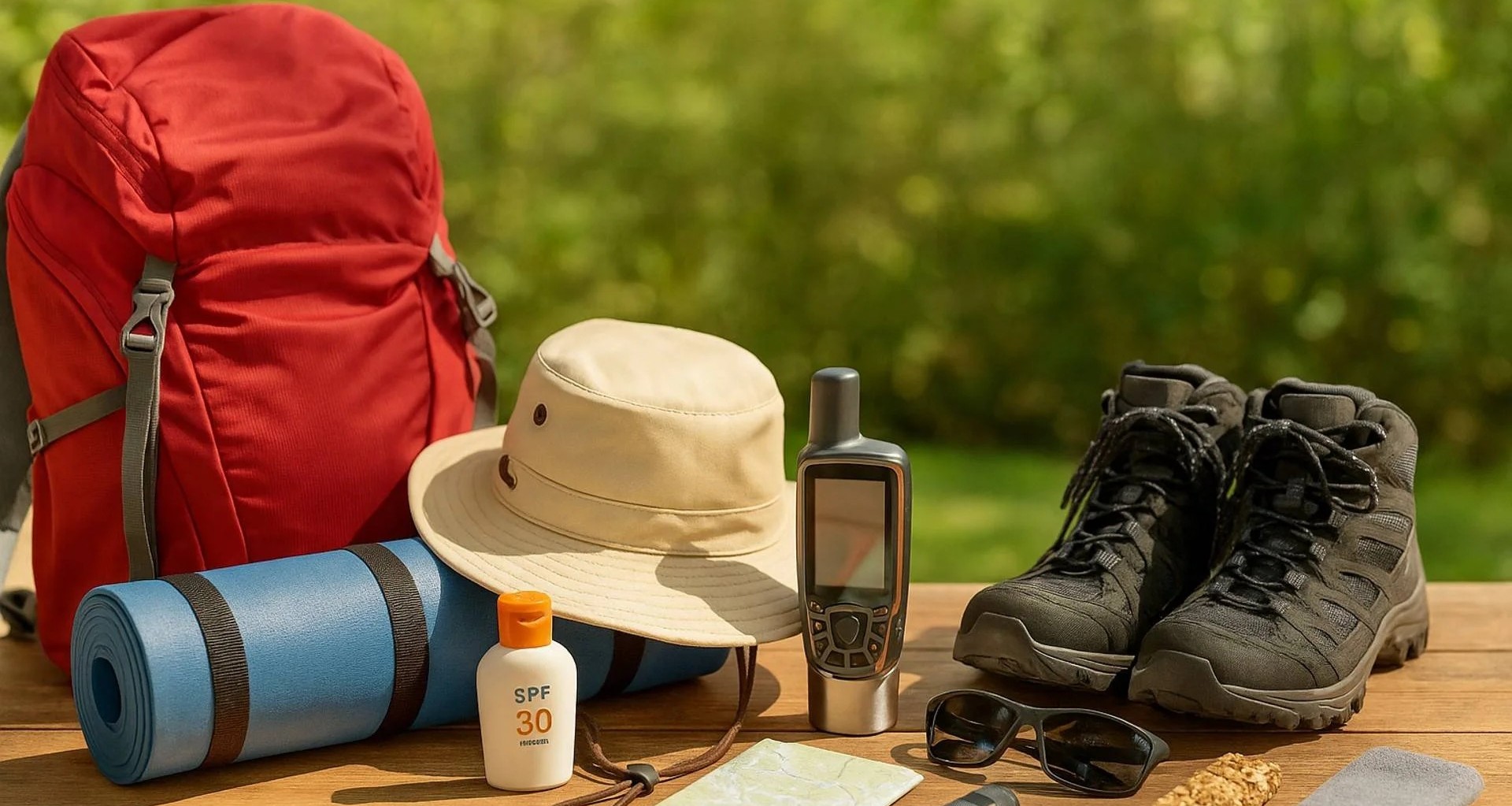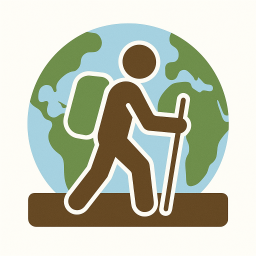
Preparing for a trek – Step 2: Essential Summer Hiking Gear
Summer hiking is an activity that is both accessible, economical and rejuvenating. And the number of possible routes is endless. But going on an adventure without being well equipped can quickly turn into a nightmare: sunburn, dehydration, injuries, protection against storms,... To fully enjoy nature, it is essential to anticipate and to be well equipped. Here is a Complete checklist of the 10 essentials to put in your backpack for a day hike in summer. All the elements listed here have been selected for their lightness, usefulness and relevance according to the recommendations of experienced hikers.
1. Water... enough water
Hydration is essential. Not drinking enough water can have rapid and sometimes serious consequences: drop in physical performance, fatigue and lack of vigilance (watch out for falls at the end of the hike), risk of heat stroke, muscle cramps (at the end of the hike and in the days that follow).
It is necessary to plan 1.5 to 3 liters of water depending on the duration of the hike, the altitude difference, the temperature and the knowledge of your physical needs which vary from person to person. Opt for a isothermal flask Or a Camelbak water bag allowing you to drink easily in small sips without having to stop walking. In case of uncertainty about the quality of the water available on the course, remember to bring purification tablets. In general, you should always consider by default that it will not be possible to find any water on the course and to take enough water to be perfectly autonomous.
2. Complete sun protection
Prolonged sun exposure can lead to sunburn, sunstroke and dehydration, especially in the mountains, or near the sea. It is advisable to always carry useful equipment in your bag to protect yourself from the sun:
- One sunscreen with a high degree of protection
- One wide-brimmed hat Or a cap
- One lightweight scarf If the hat is not enough to cover the entire neck
- Of sunglasses with high UV protection. In the mountains, it may even be safer to have glacier goggles.
- Of light colored clothing, protecting the neck and arms. In some countries, sunscreen is not enough and it is important to cover the whole body.
3. An offline GPS map or application
Even on marked trails, a map Or a application installed on your smartphone with offline maps is absolutely necessary. Download the itinerary in advance, or draw it on your paper map, and write down the highlights and places where you plan to stop, for example to eat. Identify water points when they exist. If you manage a group, identify shortcuts or and stations and paths to shorten the route or to evacuate someone from the group if they get injured or tired too quickly.
It is advisable to always have a paper card or, failing that, a printout of the map viewed on your smartphone. If the latter runs out of battery, breaks or is lost, or if more simply you are off the network without first downloading the necessary information, it will be very useful.
4. A charged phone + external battery
The telephone remains a valuable ally. As mentioned above, it can be used for guidance. But it will be very useful in the event of a problem, especially in the event of an accident. It must therefore be 100% charged before the start of the hike. If you use a paper card, it is a good idea to turn it off to keep as much battery as possible. But if you use an app to guide you, switch it to airplane mode or battery optimised. If possible, also include in your bag a lightweight external battery (powerbank), it is also charged before your departure.
5. Energy snacks
Your body burns calories continuously while walking. Eating is essential. Even if you have planned a break during which you plan to have a real meal, it is relevant to pack some complementary foods that are easy to digest and high in energy, that you can snack on while walking or during short breaks.
- Oilseeds (almonds, walnuts...)
- Dried fruits (apricots, dates, grapes...)
- Energy bars or homemade cereal bars
- A fresh fruit such as banana or apple
- A few chocolate squares
6. A minimalist first aid kit
It should allow you to treat minor aches and pains quickly :
- Bandages and bandages
- Disinfectant in pods
- Compeed or other brand of bandages for blisters (double-skin), very practical to be able to finish a hike without too much pain
- Paracetamol or ibuprofen, in case of pain
- Tick puller, an instrument that is rarely thought of but that can be very useful. In Europe, in particular, ticks can carry Lyme disease, and are very easily deposited on your legs or arms when you hike in the forest. Removing them without allowing them to inject their venom is a good practice.
7. A lightweight windproof or waterproof garment
Even in summer, a thunderstorm or an altitude zone can bring wind or rain. The weather can change very quickly, especially in the mountains. Choose one packable waterproof jacket, Gore-Tex windbreaker or modern K-Way type. Compact and light, it protects you effectively, and can be folded without taking up too much volume in your bag. Some may prefer an umbrella, but not sure if it's the most ideal way to walk, and over time, it won't keep your lower body from getting wet.
8. Adapted shoes
Forget city sneakers! You need low hiking shoes if the ground is dry, or rising if there are stones or technical passages. They must be already worn at least once, with blister-proof socks.
This advice may seem obvious but it is good to remember it for neophytes. Unfortunately, it is not uncommon to meet flip-flop hikers in the mountains :-(.
In addition, especially for high-altitude hikes, walking sticks can provide a lot of comfort, especially on descents. They make it possible to walk safely, by avoiding certain falls, and also to relieve the knees of a little weight, reducing the risk of fatigue and pain in the joints.
9. A 15 to 30L backpack
Of course you have to A backpack to carry all your equipment without leaving your hands free. It should be chosen correctly and of good quality. Too big, it weighs you down. Too small, you will have to omit essential elements. The ideal format is 20-25L with breathable back, adjustable straps, Waist belt and water bottle pocket. It should be adaptable to your size. It's also best if it has a rain pocket to protect all your stuff from getting wet, especially if you're out and about.
10. A plastic bag or ziplock for waste
Do not leave no trace of your passage. Bring a small bag to bring back your waste: tissues, packaging, leftovers. Nature will thank you.
The success of a summer hike depends on few things: good preparation, forethought, and a well-filled backpack. This checklist guarantees you comfort, safety and fun during your outings. Do not hesitate to adapt it according to your destination, weather and shape of the moment.







